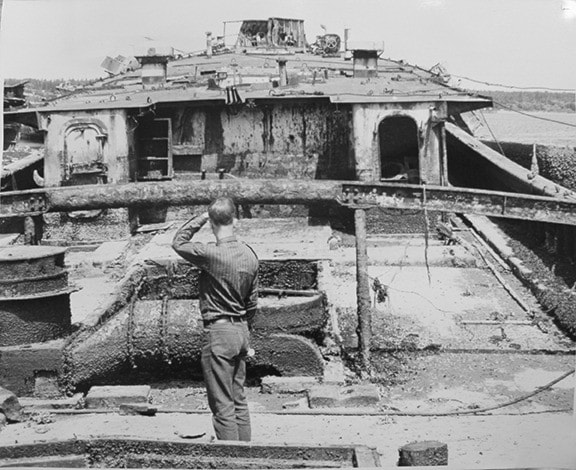I like to joke that I've sunk more ships than Admiral Nelson. I mean in print, of course. From humble tugboat to palatial ocean liner to mighty dreadnought, by groundings, collisions, fires and boiler explosions, I've described their often violent ends for the entertainment (and, hopefully, the edification) of my readers.
Almost without exception, these vessels were the victims of circumstances beyond their crews' control — wind, current, fog, ignorance or miscalculation and, as so often seems to have been the case, just plain bad luck.
Seldom have ships been sunk intentionally, at least so far as the records would indicate. I can think of wrecks caused by stupidity bordering on criminal malfeasance and, once, outright barratry, the fancy legal word for deliberately sinking a ship so as to claim its insurance.
(Hmmm, now there's a story that I've not told before...)
The irony is that, today, vessels of all kinds and sizes are being deliberately cast off, often in our harbours and all along our coastline. These vessels have been abandoned by their owners to rot and to rust and to befoul our waterways with their often fuel-leaking carcasses. Right here in Cowichan Bay, we have the submerged corpse of the former excursion vessel Beaver II and, I noticed just recently, a cabin cruiser high and dry on the estuary.
Ladysmith Harbour is currently blessed with two hulks, one on the beach and one half-submerged, and a potential disaster in the making in the form of an aging, rusted-through hulk supposedly full of fuel oil and reputedly in imminent danger of sinking at her moorings. The resulting damage to the beaches and shellfish beds will be nothing less than devastating. Hence last week's well-attended harbourside protest organized by Ladysmith's Take 5 magazine.
It's not as though some haven't tried to address these threats to the environment. Earlier this year, MP Jean Crowder's private member's bill, C-638, An Act to Amend the Canada Shipping Act that would have obligated the Government of Canada "to deal with derelict, abandoned or dangerous wrecks," failed to get unanimous approval in the House of Commons. This, despite the fact that, according to the MP for Nanaimo-Cowichan, "there are more than 200 identified (and many of them unidentified) vessels strewn around the B.C. Coast".
I must confess that I'm somewhat of mixed minds when it comes to "shipwrecks". As a professional nostalgian, I can't help but be irresistibly drawn to some of these abandoned vessels. They're you know, historic! They have character! They add "colour!" I mean that, as a kid, they really, really intrigued me.
As I grew older and began my explorations as a writer, I was privileged to be able to clamber over the wrecks of the Royston breakwater dozens of times. These hulks, some of them from the golden age of sail, some from the Second World War, fascinated me.
At low tide it was possible to board the Second World War former USN fleet repair tug Salvage King and to poke about inside, which wasn't the case for the others. What caught my attention then, this was before I became more environmentally conscious, was the fact that she was still spewing oil — several decades after her career was cut short by fire and her gutted hull joined the death watch of derelict ships chained together as a breakwater to protect log booms from wind and tide. There was a slick on the water and the surrounding rocks and wrecks were encrusted from years of these smelly black emissions.
I've not been to Royston for 20 years or more but I'm willing to bet you that, whatever state the Salvage King is in now, above or below water, her tanks are still hemorrhaging.
I may have found this to be "romantic" back then, but I sure don't now.
www.twpaterson.com
